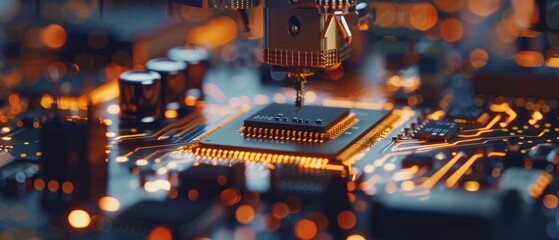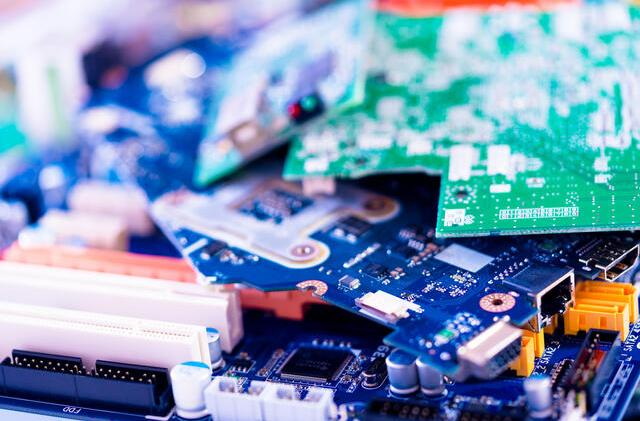Content Menu
● Introduction
● Understanding Cost Per Placement
● Factors Affecting Cost Per Placement
● Benefits of Optimizing Cost Per Placement
● Strategies to Improve Cost Per Placement
● Case Studies and Real-World Examples
● Importance of Benchmarking Cost Per Placement
● The Role of Technology in Reducing Cost Per Placement
● Conclusion
● FAQ
>> 1. What is cost per placement in SMT lines?
>> 2. How is cost per placement calculated?
>> 3. Why is cost per placement important?
>> 4. What factors affect cost per placement?
>> 5. How can I reduce cost per placement?
● Citations:
Introduction
Surface Mount Technology (SMT) lines are the backbone of modern electronics manufacturing. As the industry continues to evolve, understanding and optimizing various performance metrics becomes crucial for maintaining competitiveness. Among these metrics, cost per placement stands out as a critical factor influencing both efficiency and profitability. This article explores why cost per placement is essential for your SMT line's efficiency and how optimizing it can lead to significant benefits.

Understanding Cost Per Placement
Cost per placement refers to the cost incurred for placing a single component on a Printed Circuit Board (PCB) in an SMT line.
This metric provides a clear picture of the efficiency and cost-effectiveness of the production process. A lower cost per placement indicates a more efficient SMT line, while a higher cost suggests potential inefficiencies that need to be addressed.
Factors Affecting Cost Per Placement
Several factors influence the cost per placement in SMT lines, including:
- Machine Efficiency: The speed and accuracy of pick-and-place machines directly impact the overall cost. Higher efficiency leads to more components placed in less time, thereby reducing costs.
- Labor Costs: The number of operators required and their efficiency play a significant role in determining labor costs associated with placements. Well-trained operators can significantly reduce errors and downtime.
- Material Usage: Efficient use of solder paste, components, and other materials can help lower costs. Waste reduction in material usage directly correlates with lower costs per placement.
- Downtime: Machine downtime due to maintenance or operational issues can increase costs significantly. Regular maintenance and quick recovery strategies are essential to minimize downtime.
Understanding these factors is crucial for manufacturers aiming to optimize their SMT lines and reduce costs effectively.
Benefits of Optimizing Cost Per Placement
Optimizing cost per placement offers several advantages that enhance overall production efficiency:
- Improved Efficiency: Streamlined processes lead to faster production cycles. By reducing the time taken for each placement, manufacturers can increase their output without incurring additional costs.
- Reduced Waste: Efficient material usage minimizes waste, which lowers operational costs. This not only improves profitability but also aligns with sustainability goals by reducing environmental impact.
- Enhanced Profitability: Lower operational costs translate to higher profit margins. By focusing on optimizing cost per placement, manufacturers can improve their bottom line significantly.
Overall, focusing on cost per placement contributes to more efficient operations and better financial performance.
Strategies to Improve Cost Per Placement
Here are some practical tips to reduce cost per placement in SMT lines:
- Upgrade Equipment: Investing in high-speed, high-accuracy pick-and-place machines can significantly improve throughput and reduce cost per placement. For instance, machines like Manncorp's MC889 can place up to 20,000 parts per hour, which drastically enhances production rates compared to older models that may only achieve 10,000 parts per hour[5].
- Optimize Labor: Training operators effectively maximizes their efficiency and minimizes errors during the assembly process. Regular training sessions can keep staff updated on best practices. Additionally, employing automation where possible can reduce reliance on manual labor, further cutting costs.
- Reduce Downtime: Implementing regular maintenance schedules ensures that machines run smoothly, minimizing unexpected breakdowns that can lead to increased costs. Predictive maintenance technologies can also help anticipate issues before they cause significant downtime.
- Analyze Data: Using data analytics tools helps identify inefficiencies in the production process. By analyzing performance metrics, manufacturers can pinpoint areas for improvement and implement targeted strategies.
- Material Management: Keeping track of inventory levels and optimizing the supply chain for components can help avoid delays and excessive costs associated with last-minute orders or overstocking.
By adopting these strategies, companies can effectively lower their cost per placement while enhancing overall production efficiency.

Case Studies and Real-World Examples
Many companies have successfully optimized their cost per placement through various initiatives:
- A leading electronics manufacturer reduced its cost per placement by 20% by upgrading its SMT line with advanced pick-and-place machines and implementing a robust maintenance schedule.
- Another company achieved similar results by focusing on operator training and material efficiency. By investing in employee development and optimizing material usage, they realized significant savings in operational costs.
These examples illustrate that with the right strategies in place, substantial improvements in cost per placement are achievable, leading to enhanced overall efficiency.
Importance of Benchmarking Cost Per Placement
Benchmarking your cost per placement against industry standards is vital for understanding your competitiveness in the market. While there are no universally accepted benchmarks due to variations in technology and processes across different manufacturers, gathering data from similar operations can provide valuable insights.
For instance, some studies suggest that average assembly costs for SMT parts range from $0.02 to $0.05 per square inch depending on complexity[4]. By comparing your metrics against these figures, you can identify areas where you may be overspending or underperforming relative to peers.
The Role of Technology in Reducing Cost Per Placement
Technological advancements play a significant role in reducing cost per placement. Innovations such as automated inspection systems (e.g., X-Ray inspection) ensure high-quality solder joints while minimizing rework costs associated with defective placements[2]. Moreover, advanced software solutions allow for better planning and scheduling of production runs, further enhancing efficiency.
Investing in newer technologies not only improves accuracy but also allows for greater flexibility in handling various component types without significantly increasing costs. For example, modern pick-and-place machines are designed to handle a wide range of component sizes—from tiny 01005 chips to larger components—without requiring extensive reconfiguration[5].
Conclusion
Cost per placement is a vital metric for evaluating the efficiency of SMT lines. By understanding this metric and optimizing it effectively, manufacturers can achieve significant improvements in production efficiency, waste reduction, and profitability. As the electronics industry continues to evolve with increasing competition, focusing on cost per placement will remain crucial for staying competitive in the market.

FAQ
1. What is cost per placement in SMT lines?
Cost per placement refers to the cost incurred for placing a single component on a PCB in an SMT line.
2. How is cost per placement calculated?
It is calculated by dividing the total operational cost of the SMT line by the number of components placed.
3. Why is cost per placement important?
It is a key metric for evaluating the efficiency and cost-effectiveness of an SMT line.
4. What factors affect cost per placement?
Factors include machine speed, labor costs, material costs, and downtime.
5. How can I reduce cost per placement?
Strategies include improving machine efficiency, reducing waste, optimizing labor usage, and leveraging technology effectively.
Citations:
[1] https://www.circuitnet.com/experts/40004.html
[2] https://www.7pcb.com/blog/surface-mount-smt-assembly-cost-china
[3] https://electronics.stackexchange.com/questions/30671/estimating-assembly-cost
[4] https://aaloktronix.com/how-much-does-it-cost-to-get-a-pcb-assembled-the-ultimate-guide/
[5] https://www.manncorp.com/blogs/learning-center/reduce-your-cost-per-placement-with-manncorps-new-pick-place-machine
[6] https://www.swfuliusmt.com/how-much-would-it-cost-to-set-up-a-pcb-assembly-line/




















